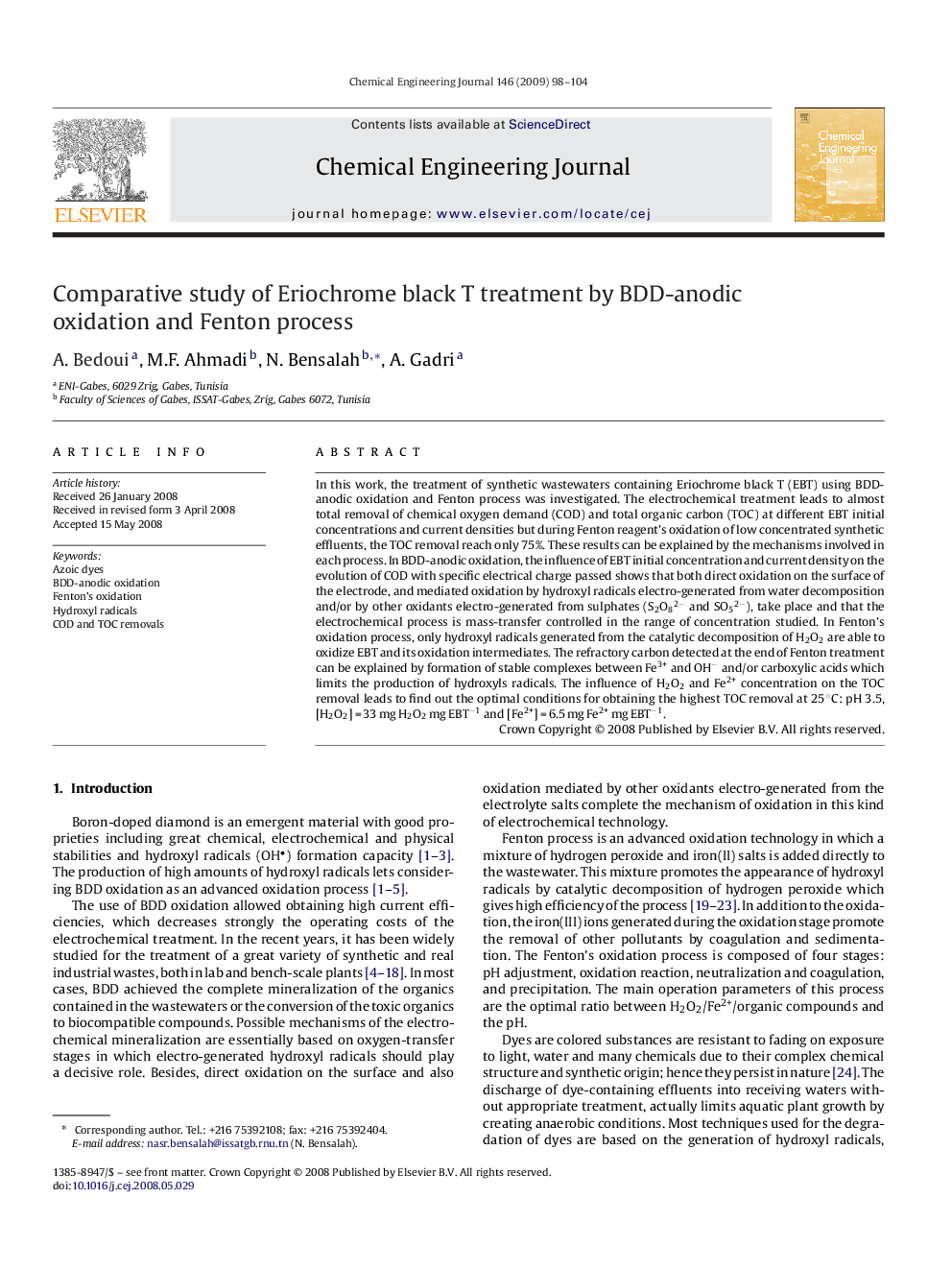| Article ID | Journal | Published Year | Pages | File Type |
|---|---|---|---|---|
| 152646 | Chemical Engineering Journal | 2009 | 7 Pages |
In this work, the treatment of synthetic wastewaters containing Eriochrome black T (EBT) using BDD-anodic oxidation and Fenton process was investigated. The electrochemical treatment leads to almost total removal of chemical oxygen demand (COD) and total organic carbon (TOC) at different EBT initial concentrations and current densities but during Fenton reagent's oxidation of low concentrated synthetic effluents, the TOC removal reach only 75%. These results can be explained by the mechanisms involved in each process. In BDD-anodic oxidation, the influence of EBT initial concentration and current density on the evolution of COD with specific electrical charge passed shows that both direct oxidation on the surface of the electrode, and mediated oxidation by hydroxyl radicals electro-generated from water decomposition and/or by other oxidants electro-generated from sulphates (S2O82− and SO52−), take place and that the electrochemical process is mass-transfer controlled in the range of concentration studied. In Fenton's oxidation process, only hydroxyl radicals generated from the catalytic decomposition of H2O2 are able to oxidize EBT and its oxidation intermediates. The refractory carbon detected at the end of Fenton treatment can be explained by formation of stable complexes between Fe3+ and OH− and/or carboxylic acids which limits the production of hydroxyls radicals. The influence of H2O2 and Fe2+ concentration on the TOC removal leads to find out the optimal conditions for obtaining the highest TOC removal at 25 °C: pH 3.5, [H2O2] = 33 mg H2O2 mg EBT−1 and [Fe2+] = 6.5 mg Fe2+ mg EBT−1.
